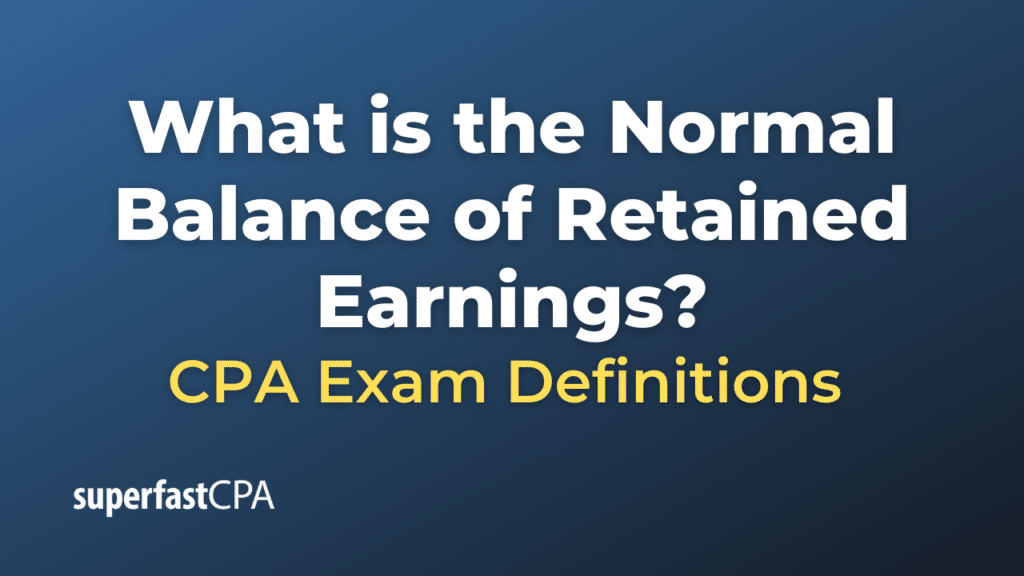Normal Balance of Retained Earnings
The normal balance of Retained Earnings is a credit.
Retained earnings is an equity account, and like most other equity accounts, it increases with credit entries and decreases with debit entries.
Retained earnings represents the cumulative earnings of a company that have been retained (i.e., not distributed to shareholders in the form of dividends) to reinvest in the business or pay off debt. When a company earns net income, it will credit the retained earnings account, thereby increasing its balance. Conversely, when a company incurs a net loss or declares dividends, it will debit the retained earnings account, thereby decreasing its balance.
So, if you’re looking at a balance sheet and you see a credit balance in the Retained Earnings account, it means the company has accumulated earnings over its lifetime. A debit balance, on the other hand, would indicate that the company has accumulated net losses or has declared more dividends than its accumulated earnings. However, a debit balance in Retained Earnings is relatively rare and typically indicates financial distress.
Example of Normal Balance of Retained Earnings
Let’s consider a fictional company, “ABC Corporation”.
At the beginning of the year, ABC Corporation’s Retained Earnings account had a balance of $50,000 (credit).
During the year, ABC Corporation earned a net income of $20,000. Net income increases the balance in the Retained Earnings account, so we would credit the Retained Earnings account by $20,000. Now, the balance in the Retained Earnings account is $70,000 (credit).
Now, let’s say ABC Corporation declares and pays dividends of $10,000 to its shareholders during the year. Dividends decrease the balance in the Retained Earnings account, so we would debit the Retained Earnings account by $10,000.
At the end of the year, after considering the net income and dividends, the balance in the Retained Earnings account would be $60,000 (credit).
Here’s how it looks in T-account form:
Retained Earnings
---------------------------
Beginning balance | $50,000
Net Income | $20,000
Dividends | ($10,000)
---------------------------
Ending balance | $60,000
So, in this example, you can see how the Retained Earnings account increases with a credit entry (from net income) and decreases with a debit entry (from dividends). The normal balance of the Retained Earnings account, which is a credit balance, represents the accumulated net earnings of ABC Corporation that have been retained in the business.













